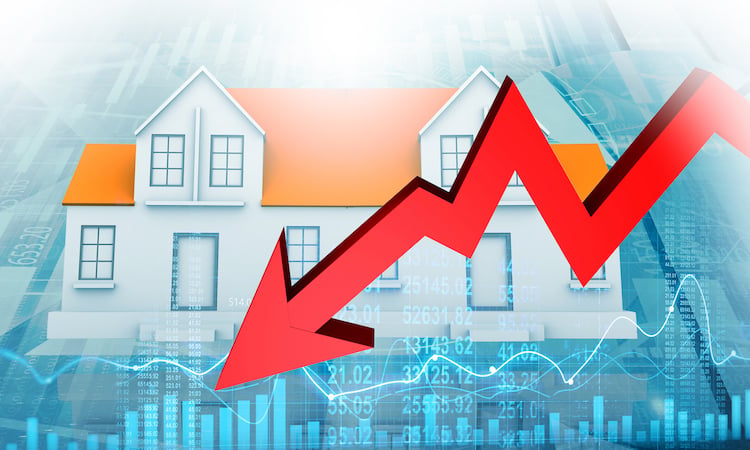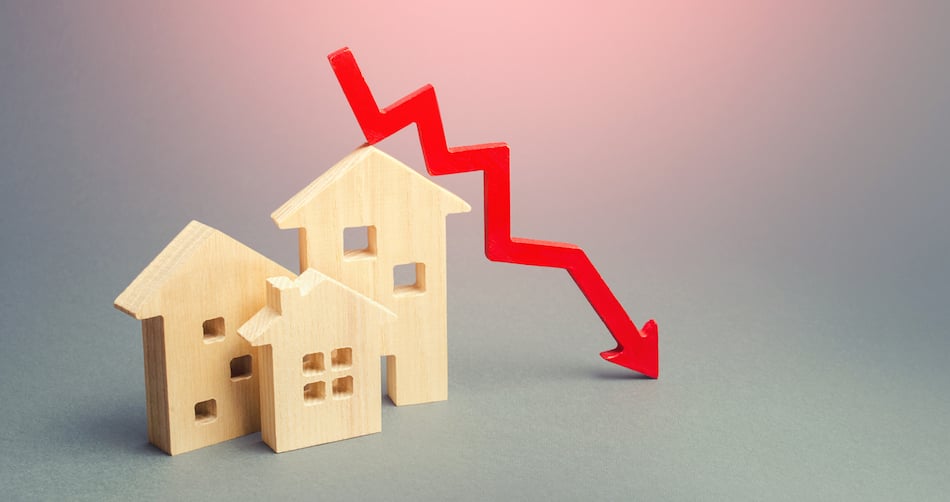There are two main types of potential return from a rental property: cash flow and appreciation.
Cash flow is generated by rental income, and appreciation is generated by the increase in property value over the long term. Many investors focus on finding properties with positive cash flow, or a balanced blend of cash flow and appreciation.
However, other investors aim to make money by intentionally buying a negative cash flow rental property. In this article, we’ll explain why purchasing a property with negative cash flow may be an attractive strategy for some investors.
Key takeaways
- A negative cash flow rental property does not generate enough rental income to pay for operating expenses and debt.
- Cash flow in a rental property may be increased by adjusting the rent to a fair market price, improving tenant screening, reducing operating expenses, and updating to justify a higher rent.
- An investor may also buy a negative cash flow rental property because rising property prices offset any negative cash flow.
What is cash flow in real estate?
Cash flow in real estate is the difference between a property’s rental income and operating expenses, including the mortgage payment. Another way of thinking about cash flow is that it is the money left over at the end of each period after all of the rent has been collected and all of the bills have been paid.
An investment property can generate positive cash flow, break even, or have negative cash flow, sometimes all during the same year.
Positive cash flow
A positive cash flow property is one where the rental income covers all of the expenses, with any remaining money recorded as profit to an investor. This is what real estate investors call a property that “cash flows.”
Break even cash flow
A rental property that breaks even generates just enough rental income to pay for the operating expenses and the mortgage, leaving no money left over as profit for an investor. It isn’t losing money, but it isn’t turning a profit either.
Negative cash flow
A rental property with negative cash flow does not generate enough rental income to pay for operating expenses and debt service. This means an investor must contribute personal funds each month to cover any shortage.
The following examples illustrates the three different types of rental property cash flow, using annual income and expenses:
| Positive | Break Even | Negative | |
| Rental income | $15,000 | $14,000 | $13,000 |
| Expenses | $6,000 | $7,500 | $8,000 |
| Mortgage | $6,000 | $6,500 | $7,000 |
| Cash flow | +$3,000 | $0 | <$2,000> |
Although it may seem illogical, some investors intentionally buy negative cash flow rental property. That’s because a home that doesn’t cash flow can sometimes be purchased at a discount, and may be able to be turned into a profitable rental property.
Can negative cash flow in a rental property be cured?
Before investing in a negative cash flow rental property, an investor should determine why the property isn’t generating enough cash.
Sometimes a rental property is in a bad neighborhood that isn’t attractive to tenants or in a market where the economy is going downhill. Since an investor can’t pick up and move the home, there isn’t a lot that can be done in situations like these.
However, sometimes negative cash flow is caused by problems that can be fixed, providing an investor with the opportunity to turn the property around.
Rental income is too low
Negative cash flow can result if the monthly rent price is too low or vacancy levels are too high.
Before renewing a tenant’s lease, an investor can run rent comparables to determine the current fair market rent for homes similar to the one an investor has. Good resources to use to help determine the right rent include Rentometer or Zillow Rent Zestimate.
Some investors are nervous about raising the rent because they are afraid a tenant will leave. But tenants usually know what homes are renting for, and may be hesitant to spend the time and money moving if a rent increase is reasonable.
High vacancy rates may occur when the rent is too high compared to similar homes, or if a tenant screening process is poor. By using an online tenant screening service such as SmartMove or E-Renter, a landlord can pull a prospective tenant’s credit report, rental history, and background check to better qualify an applicant.
Operating expenses are too high
A real estate investment may also have negative cash flow when operating expenses consistently run over budget every month. One reason that upkeep costs may be excessive is because of deferred maintenance.
Some owners choose to ignore maintenance issues until they are forced to fix them. The problem with waiting to make repairs is that inexpensive minor issues have a way of becoming big and expensive if an owner waits too long to fix them.
For example, a small water leak under the sink can usually be fixed by a handyman in just a few minutes. But if the water leak is ignored, the entire pipe and cabinetry may need to be replaced, or the kitchen remediated for black mold.
One good way to keep operating expenses under control to help a rental property generate positive cash flow may be by hiring a professional local property manager.
A manager will perform routine inspections of the inside and the outside of the home to identify items in need of repair. Good property managers usually have an in-house staff to make inexpensive repairs, or maintain a network of reliable and trustworthy cost-effective vendors.
Updating is needed
Updating and remodeling is sometimes necessary to attract qualified tenants willing to pay a fair market rent. Improvements aren’t inexpensive, which is why investors make strategic updates that justify a higher rent rather than trying to do everything all at once.
Depending on the local market, some improvements a tenant may be willing to pay more rent for include attractive outdoor space, a room to use as a home office, and updated finishings in the kitchen and bathrooms.
Although it may take time to generate enough extra rental income to recover the money spent on making improvements, an investor may be able to benefit from tax savings right away.
The 100% bonus depreciation rule for rental property owners allows an investor to expense the cost of certain capital improvements the same year, instead of claiming a smaller depreciation expense over a number of years.

Why some investors buy negative cash flow rental property
One of the main reasons for buying a property with negative cash flow is because there is the possibility of future appreciation in property value that offsets any negative cash flow.
According to Zillow, the typical home value of a middle price tier home in the U.S. increased by 18.4% last year, and is forecast to appreciate by another 13.6% over the next year (as of September 30, 2021).
The following example illustrates how a negative cash flow rental property might be profitable for an investor focusing on appreciation instead of cash flow:
| Year 1 | Year 2 (current) | Year 3 (projected) | |
| Purchase price | $260,000 | $308,000 | $349,888 |
| Appreciation | - | 18.4% | 13.6% |
| Rental income | $22,000 | $23,000 | $24,000 |
| Expenses | $13,600 | $14,300 | $13,600 |
| Mortgage | $12,000 | $12,000 | $12,000 |
| Annual cash flow | <$3,600> | <$3,300> | <$3,000> |
| Accumulated cash flow | - | <$6,900> | <$9,900> |
| Annual change in value | - | $48,000 | $41,888 |
| Total change in value | - | - | $89,888 |
In the above example, an investor has total negative cash flow of $9,900 over the 2-year holding period. However, due to appreciation, the total potential net profit is nearly $80,000:
- Total change in value: $89,888
- Accumulate cash flow: <$9,900>
- Net potential profit: $79,988
A second reason an investor might buy a negative cash flow rental property is to flip the investment. An investor using a fix and flip strategy isn’t concerned about the property’s current cash flow, because the home will not be held for the long term.
Key to this investment strategy is to accurately estimate any needed repairs and purchase a vacant home at a below market price. Once repairs are completed, the home is ready to flip for a profit.
It’s important to note that both of these strategies for making money from a negative cash flow rental property depend on market conditions working in favor of a real estate investor. While the single family rental market has been performing extremely well over the last few years, there’s always the possibility that market conditions will change.
Closing thoughts
As a rule of thumb, most investors look for a rental property with positive cash flow.
However, there may be times when buying a negative cash flow rental property makes sense. An investor may be able to turn a negative cash flow property positive by raising the rent, improving tenant screening, or making updates to justify a higher monthly rent.
Other times, an investor with enough cash in reserve may purchase a negative cash flow property in a real estate market where home prices are rapidly rising, then sell the home when the timing is right.










